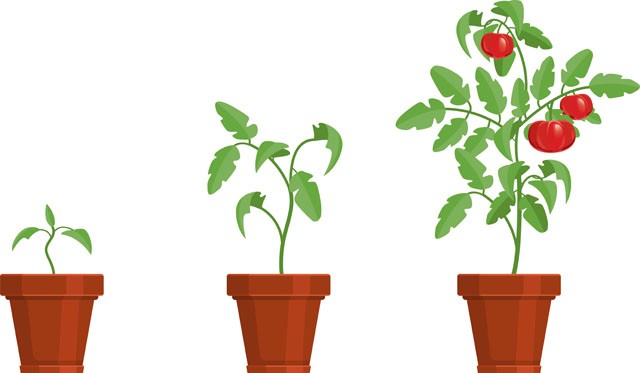For years, I have dreamed about having my own beautiful garden with the healthiest, most beautiful vegetables. Despite the fact that I do not have much of a green thumb, I have committed to giving it a shot this year. After doing a bit of research, I have decided growing my vegetables in pots is the more reasonable choice for me. Many people choose to grow their vegetables in pots for a variety of reasons, including:
Convenience. It does not get any easier than stepping out on your balcony to pluck a cherry tomato or grab a sprig of rosemary.
Soil. Oftentimes, the soil around your home may not be ideal for what you want to grow. Gardening in pots allows you to control your soil, solving serious soil issues and various plant diseases. Your plants stay healthier and grow faster.
Less watering. Watering a few plants in pots conserves water and is much less time consuming than watering a plot of land.
Sun. Some plants may have different sun needs than others. You may notice some plants are not getting enough light, while others need less. You can relocate pots to position them in the best place to receive the optimal amount of sun for that plant.
So let’s get started! First, as a general rule, choose a larger pot for your plants. Small pots dry out quicker and require more watering. Second, consider sunlight. Most produce requires six hours of sunlight per day. Salad greens can get by with less. Third, fill your pots with a potting mix, adding in a liberal amount of granular fertilizer and a shovel full or two of compost. Lastly, remember most produce requires a consistent supply of water. Using a self-watering planter is a great way to ensure they are getting the right amount of water. Refilling every few days is the only requirement.
Even those of us that may kill everything we have ever tried to grow have a good chance of experiencing success with the following vegetables that do not require as much space:
• Beans — Derby and Provider types: 12-inch-deep pot
• Beets — Red Ace type: 12-inch-deep pot or larger
• Carrots — Thumbelina, Short ‘n’ Sweet and Little Finger types: 12-inch-deep pot
• Cauliflower: 8-inch-deep pot or larger
• Broccoli: 8-inch-deep pot or larger
• Cabbage: 12-inch-deep pot, one plant per pot
• Cucumber — Salad Bush and Bush Pickle types: 8-inch-deep pot or larger
• Eggplant: 5-inch-deep pot
• Lettuce and other salad greens: 12-inch-deep pot
• Melons — Bush Sugar Baby type: 12-inch-deep pot
• Onions: 4- to 5-inch-deep pot
• Peas — Green Arrow, Maestro, English and Sugar Bon types: 12-inch-deep pot
• Peppers: 10-inch-deep pot
• Potatoes: 12-inch-deep pot, three to four potatoes per pot
• Radishes: 8-inch-deep pot
• Squash — Cornell Bush Delicata, Papaya Pear and Table King types: 5- to 7-inch-deep pot
• Tomatoes — Patio, Tiny Time and Window Box Roma types: 8-inch-deep pot
For some people, gardening in pots is a necessity, as they have no space for a traditional garden. Whether your reasons are lack of space, convenience or avoiding hungry wildlife, growing your produce in pots is a good first step towards a bountiful harvest.



